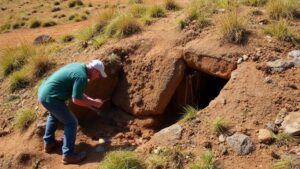Following Maps With Coordinates Based on Stars and Seasonal Shadows
Following Maps With Coordinates Based on Stars and Seasonal Shadows
Navigating by the stars and understanding seasonal shadows has been a fundamental aspect of human exploration for millennia. In this article, we will explore the principles and techniques behind celestial navigation and the use of shadows for mapping purposes. This comprehensive overview will include historical context, methodologies, and practical applications that illustrate the relevance of these age-old techniques in contemporary settings.
Historical Context of Celestial Navigation
Celestial navigation is the art and science of determining ones position on Earth by observing celestial bodies, such as stars, planets, and the moon. This technique dates back thousands of years, with some of the earliest documented practices attributed to ancient mariners and explorers. For example, Polynesian navigators utilized the stars to traverse vast ocean distances, relying on a wealth of astronomical knowledge and techniques passed down through generations.
One pivotal development in celestial navigation was the advent of the astrolabe in the 2nd century BCE. This ancient instrument allowed navigators to measure the altitude of celestial bodies, enabling them to calculate latitude accurately. As navigation techniques evolved, sailors began to use a systematic approach of recording positions and coordinates based on star positions, leading to the emergence of maps that integrated celestial navigation with terrestrial landmarks.
Understanding Seasonal Shadows
Also to celestial navigation, the observation of seasonal shadows plays a crucial role in mapping and understanding geographical orientation. Historically, people have used sundials to track the movement of the sun and determine the time of day based on shadows cast. This phenomenon can also signify seasonal changes, as the angle and length of shadows change throughout the year.
The ancient Egyptians famously constructed obelisks and other structures aligned with the suns position during solstices, using shadows as a reference for agricultural planting and other seasonal activities. Today, the science behind shadow observation is further understood through concepts like solar geometry, allowing modern navigators and map makers to incorporate shadow-based navigation into their toolkits.
Techniques for Navigating by Stars and Shadows
Celestial Navigation Techniques
- Using the North Star: In the Northern Hemisphere, Polaris, or the North Star, is a critical reference point. Its position above Earth signifies true north, enabling navigators to align their maps accordingly.
- Flight Method: Mariners and aviators also employ a technique called the flight method, which involves plotting a course based on the position of several stars simultaneously. By triangulating their position with this method, navigators achieve precise coordinates on a map.
- Using Nautical Almanacs: These publications contain tables with the positions of celestial bodies at regular intervals. Navigators can use these to locate stars and determine their position based on time and observed star distances.
Shadow-Based Navigation Techniques
- Solar Noon Observations: Determining solar noon, when the sun is at its highest point in the sky, allows individuals to create a reference point using shadows. This can be particularly useful in determining latitude.
- Sun Path Analysis: By understanding the suns path throughout different seasons, navigators can anticipate the angles and lengths of shadows, which can help in plotting directions relative to landmarks.
Real-World Applications
Outside of historical usage, celestial navigation and shadow observation continue to play roles in modern exploration and mapping practices. For example, while GPS technology has revolutionized navigation, certain sectors still prioritize celestial navigation during emergencies where electronic systems may fail. Fishermen, offshore sailors, and remote expeditions often teach these traditional techniques to ensure safety and self-reliance.
Also, shadow casting technology has applications in urban planning and architecture. Understanding how shadows will be cast by buildings on surrounding areas allows architects to design structures that optimize sunlight exposure and minimize overshadowing of green spaces.
Actionable Takeaways
To effectively apply celestial navigation and seasonal shadow observations, individuals can:
- Familiarize themselves with key constellations and utilize star charts for navigation.
- Practice shadow measurements at different times of the year to understand their implications for navigation.
- Consider the benefits of integrating traditional navigation techniques with modern technology for enhanced safety and reliability.
Ultimately, following maps with coordinates based on stars and seasonal shadows embodies the synergy between ancient wisdom and modern practice, enabling individuals to navigate their environments with greater accuracy and confidence.


